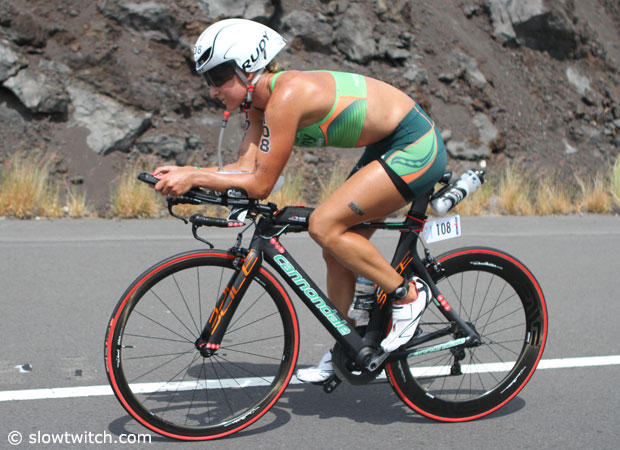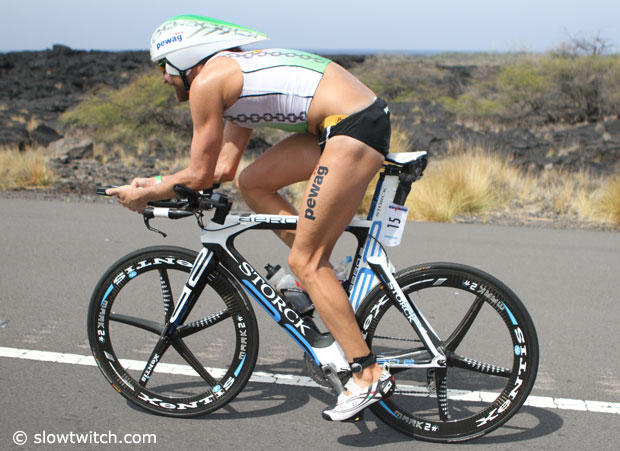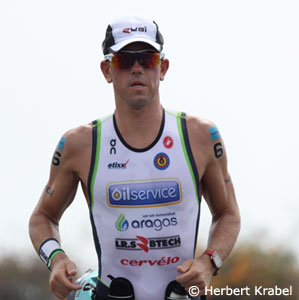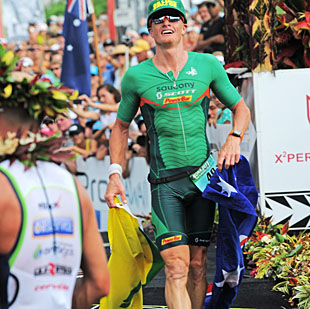The power of Kyle Buckingham
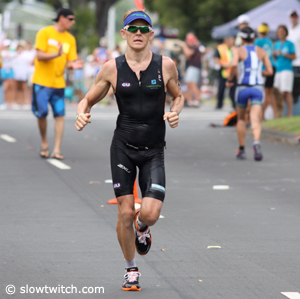
South African Kyle Buckingham has quite a few fine results to his name, but possibly non more impressive than his 2013 GoPro Ironman World Championships result where he recorded a super fast 8:37:26 that allowed him to be the top age grouper. He plans to turn Pro in 2014 and you can see now how his bike power file compares to the Pros at the 2013 Ironman Hawaii event – thanks to the analysis of Jim Vance of TrainingPeaks.
One performance at the 2013 Ironman World Championships really stood out – and you probably aren’t even aware of it. Kyle Buckingham of South Africa set a new Kona age group record with a time of 8:37:26. Kyle won the Men’s 30-34 age-group, was the first age grouper to cross the line, and finished 16th overall including the professional men.
This was a very impressive race, and everyone is quick to say Kyle is ready for the Pro ranks. But rather than make assumptions based on a finishing result, let’s look at the data and see what it shows us. First, Kyle’s splits from Ironman.com.
Swim: 56:09
Bike: 4:40:07
Run: 2:56:50
Total: 8:37:26
His swim time would put him in front of only eight of the 50+ plus professional men on the start list. He was 99th out of the water overall, including only being 10th in his age group out of the water. Considering he would come back to defeat all but 15 pro men says a lot about his bike and run — but from a coach’s perspective, his swim would be something to continue to address in his training.
His bike performance was an impressive part of his day, as his split of 4:40:07 ranked 29th overall in the entire race. (See his Quarq power file here). His Variability Index (VI) from the entire day was 1.02, which matched Luke McKenzie and was even lower than Ben Hoffman and Craig Alexander. VI measures how steady your output is, with a VI of 1.0 representing a perfectly smooth output.
His Intensity Factor of .80 is higher than most would expect especially for an age grouper, but because he was riding such a fast speed he was able to keep his Training Stress Score (TSS) under the 300 mark, meaning he still saved some for the run. As mentioned in part 2 of this series, we like to see a bike TSS of under 300 or the run may suffer.
But how did his wattage compare with the professional men’s field? This chart helps summarize a comparison of Kyle’s power against the pros who have shared their files.

His bike numbers clearly show he is capable of riding with the main pro field, and even being one of the top riders when looking at w/kg and average watts. But how would he have done in one of the areas of the course which are known for causing separation? Let’s isolate the climb to Hawi and see how these guys compare.

What we notice from this is that Kyle’s output really didn’t change much on the climb to Hawi – only 10 watts, or about a 3.7% increase in his w/kg. If he was with the pro men’s field and there was a surge, would he be able to handle it and go with the other guys in the field? This is a question we don’t know the answer to, but the age group race is a different dynamic than the pro’s race, due to the surges, attacks, and need to be with the group in the latter. If an athlete wants to be standing on a Kona podium as a pro male, he must be able to handle these surges, or be able to get away from the speedy legs of the best runners in the field.
Kyle’s run split of 2:56:50 was actually the most impressive part of his day. To be able to ride at that w/kg and still run sub 3-hours puts him contention to continue to do quite well, especially if he makes a full-time commitment to the sport. His run split actually ranked 16th overall in the field, matching his place for the race.
A few questions which need to be asked, but can’t be answered simply:
– Did he benefit from having more swimmers around him to pull him to the time he swam, since he was in the AG start?
– If he started with the pro men, would he have struggled mentally to be at the back of the field early?
– Did the fact he had so many age-groupers around him early on the bike give him any benefit? He likely would have been alone on the Queen K in the pro-field.
– Did the winds fluctuate and change, hurting or helping him?
– If he was subject to racing according to the Kona Points Ranking system, would he have been as fresh and ready to compete at a high level against the pro men, or tired from a long season?
These questions all need to be asked when comparing an age grouper against the Pros, and only time will answer them. What we do know from this impressive performance that we likely can expect to see Kyle Buckingham doing well on the Ironman circuit for a number of years to come. How far up the placings will he get? We’ll just have to stay tuned.



